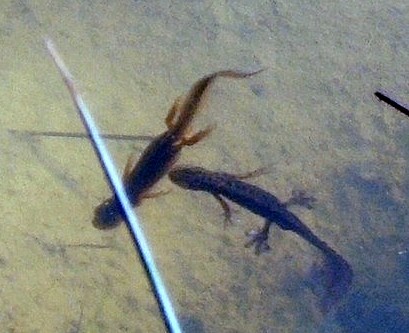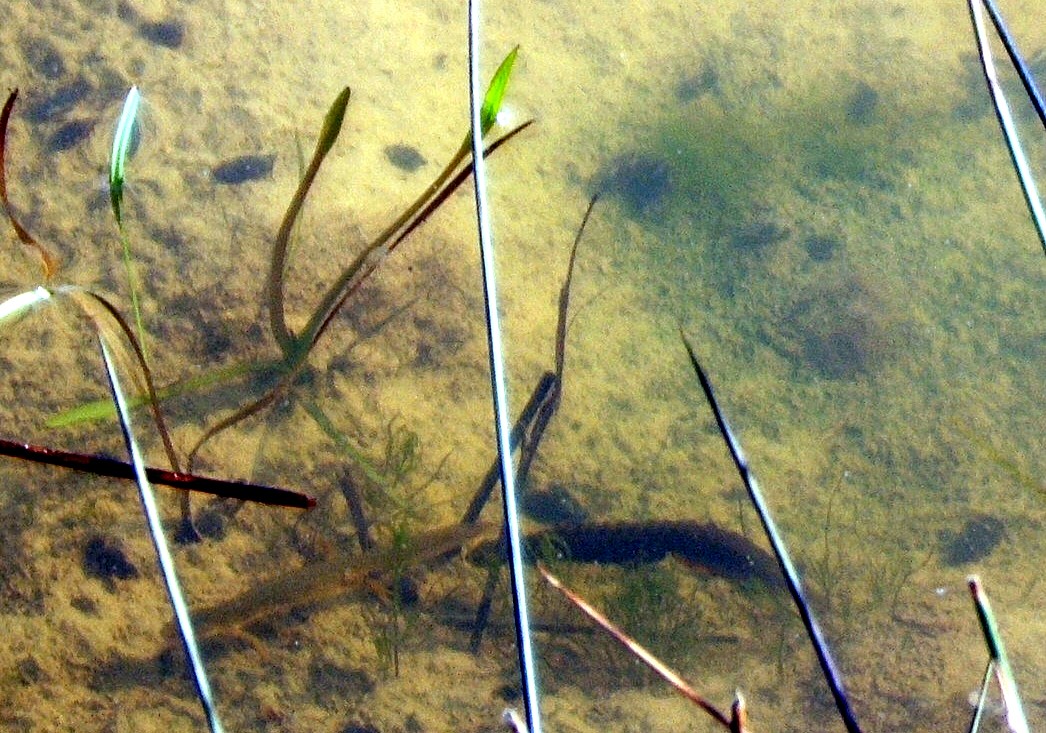
We have three native newt species, of which the smooth newt is the most common and abundant throughout the Mid Arun Valley. Warmer days see these creatures emerge from hibernation and head for ditches, pools and field, woodland and garden ponds. Newts, superficially resembling lizards, look rather drab for most of the year, but come the breeding season the males develop a smart wavy crest along their backs from head to tail, and both sexes have an orange belly sporting large black blobs. Once a suitable female is spotted the male commences an elaborate courtship display.
He faces his beau and vibrates his tail down one site of his body – this continuous vibration is interspersed with the odd vigorous slap – actions designed to waft pheromones through the water to entice her. Sadly for newts, this is about as amorous as it gets, for the male then deposits a neat packet of sperm on the substrate which the female picks up and absorbs.
Females produce up to 400 eggs laying 7 – 12 a day which, unlike those of frogs and toads which are laid in clumps or strings, are carefully and individually wrapped in submerged leaves. The tadpoles, unlike frogs, develop the front legs before the back and like frogs, if unlucky, are eaten by fish. If caught short these resourceful creatures are able to regenerate limbs, eyes and even heart ventricles.
Newt tadpole food is anything small such as plankton, aquatic snails and water fleas skilfully ensnared with a tiny set of neat sharp teeth. They breathe through feathery gills which are gradually reabsorbed into the body, for as the tadpole develops into a newt air-breathing lungs develop, for the best part of life is spent on land.
Most activity on land occurs under cover of darkness, and so the optimum time to spot a newt is spring to early summer in a pond, for breeding adults and fully developed juveniles must swim to the surface to gulp air before disappearing to the watery depths. Just as March is straddled between winter and spring, newts are straddled between land and water.

